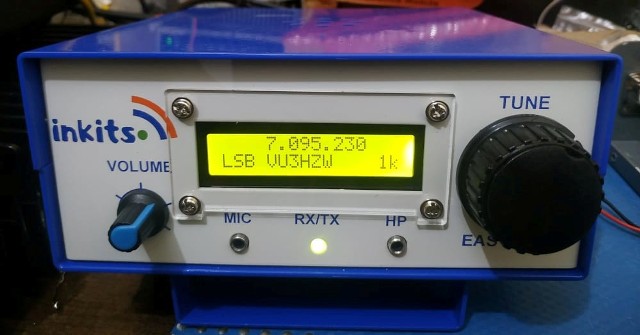2nd IF Section
Before we start installing components, now is a good time to install all of the wire jumpers on the top of the board. It will make testing easier as we will connect to the rx or tx line plus the 12 volt line to power the appropriate circuit during test.
This section is almost identical to the the RF Amplifier section so it shouldn't present any difficulties.
I found a board problem on mine. On the left picture, notice there is no right hand hole for the 100 ohm resistor in the lower left corner. It's easily fixed simply by soldering the right lead of the resistor to the wire adjacent to where the hole should go.
Your board should now look like this.
Lets test it!
Testing the receive side is a problem as there are many frequencies present after the mixer and when looking at them with a scope, it is confusing. Lets look at the receive side using a spectrum analyzer.
Here's some of the frequencies at the input to the crystal filter. It's a good thing that most of these will go away because they won't go through the filter. Part of the reason there are so many frequencies here is because we are overdriving the antenna input circuits with 10 millivolts input. Lets look at what happens when we reduce the input to the mixer. This is normally done by decreasing the RF gain, either with a manual control or agc on the rf amplifier.
This is a reduction of 10db of input signal. That made a big difference. The VFO harmonics are still there but a lot of the mixer products are drastically reduced. Remember, each vertical division is 10db and a reduction to 1/10th of the power. Lets reduce the input another 10db.
That almost eliminated all of the excess mixer products. This is a 20db reduction from the first picture. 20db is 1/100th of the original power or 1/10th of the original voltage so we now have 1mv input at the antenna connector. Under normal operation, that's still a big signal. Our receiver should see signals down to around .3 micro volts.



.jpg)

No comments:
Post a Comment